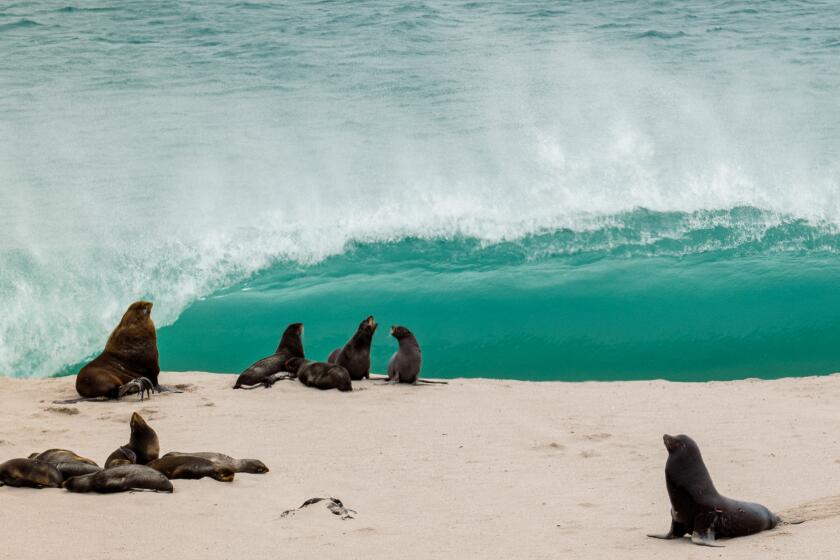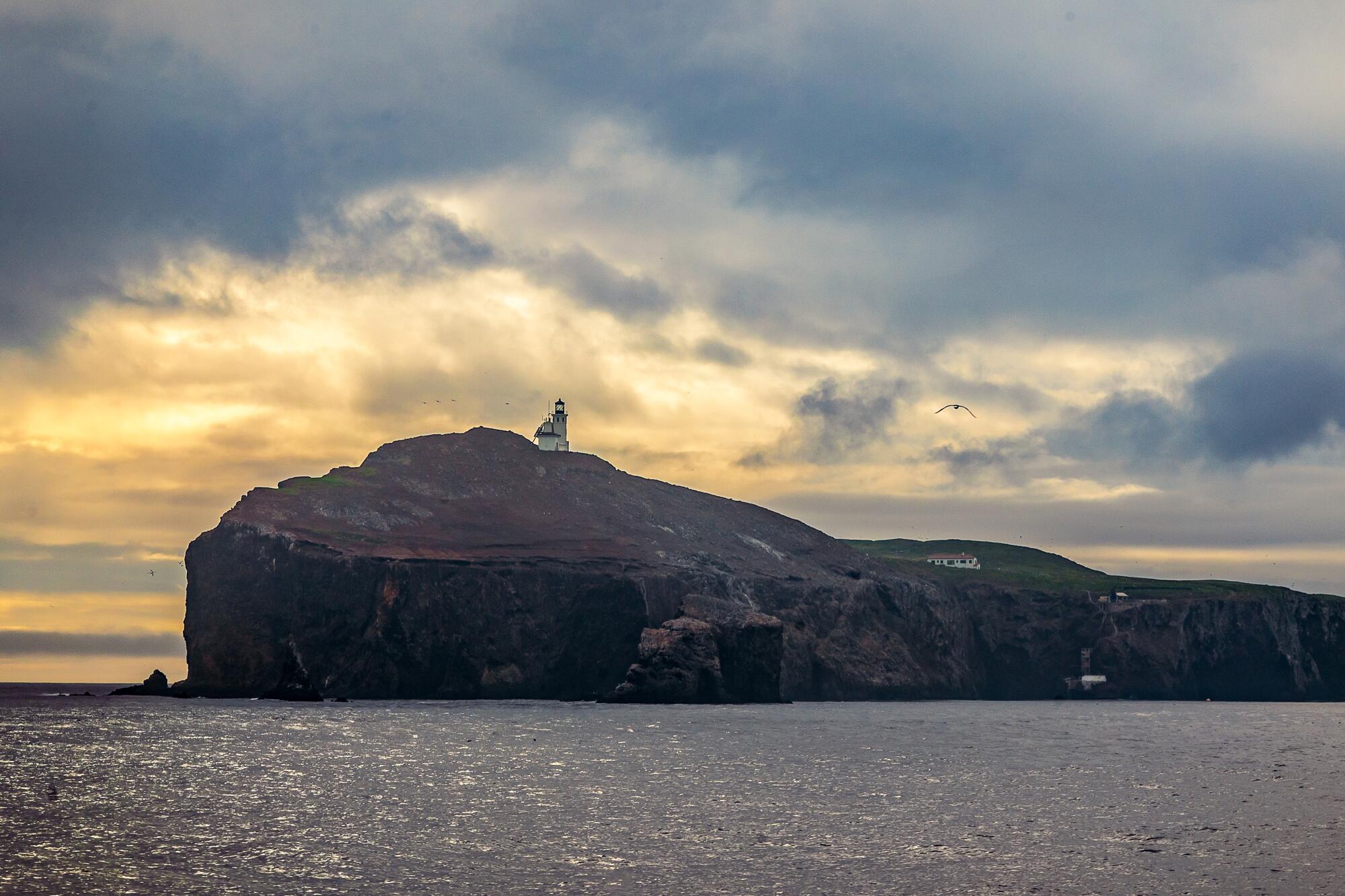
- Share via
As I arrived on Anacapa Island, my vision of an idyllic slice of the natural world was shattered by a loud moan — the sound of the foghorn.
It surprised me. Out on San Miguel, the most remote of the islands in Channel Islands National Park, all you hear is the crash of the waves, the howl of the winds and the bellows of seals and sea lions. On Santa Rosa, slightly closer to us, the calm of the island can still be shattered by the sonic boom of a rocket launch from across the channel at Vandenberg Space Force Base. But here on Anacapa, the closest of the islands, human presence is inescapable — every 20 seconds, day and night, a droning tone resonates from the lighthouse perched atop the island’s eastern tip.
With seals and sea lions and hardly any humans, San Miguel Island, among the Channel Islands, has been called ‘the Galapagos of North America.’
For the record:
10:37 a.m. April 7, 2023A previous version of this story stated that passenger steamship Winfield Scott struck Anacapa Island in December of 1953. It struck in December of 1853.
While I found the foghorn to be an unwelcome greeting, over the course of my day exploring the island, I learned that the lighthouse and the foghorn, along with the thick and enduring fog that’s present any time outside the heat of late summer, are just a few of the players in the long saga of humankind and nature merging and colliding to shape Anacapa, now open to travelers. From Channel Islands Harbor in Oxnard, it’s a smooth, hour-long trip across the Santa Barbara Channel. Unlike the other Channel Islands, which are covered in miles and miles of hiking trails, Anacapa is quite small — there are just three miles of trail on the eastern islet, where visitors are allowed, and it is easy to see everything in a short day trip.
The island has enjoyed a brief respite from visitors, as the landing pier was replaced last year, and boat service to the island was paused last February for the year-long project to upgrade it. Island Packers, the concessionaire to Channel Islands National Park, just resumed trips in January. Having visited three of the five Channel Islands last year, I was excited to see how a year without tourists may have changed it.

When to visit
Service to Anacapa runs year-round because the short ride passes through a calm part of the Santa Barbara Channel and is mostly unaffected by the seasonal sea swells that can impair voyages to outer islands in the winter and spring. Be warned that the island is inhabited by western gulls, and spring is their mating season — so from May through August, the island can be rather loud and smelly thanks to thousands of hatchlings and their doting parents.
There is a small seven-site campground for folks who want to stay a night to take in the island experience and see the lighthouse in action — reservations open six months in advance and can fill quickly for peak seasons. The most strenuous part of the island is the 153 steps up the staircase that takes you from the pier to the top of the island, so Anacapa is a great option for youngsters or people just getting acquainted with the Channel Islands.
The best journeys for hiking, stargazing, surfing, wine tasting, kayaking and more. Who’s ready to hit the road?
What to bring
Most of the year, the island will be either damp, foggy or windy, so a waterproof outer layer is essential even for a day trip. Unlike dark, gloomy days in the mainland, a foggy day on Anacapa can be very bright, so bring sunglasses to protect your eyes from the glare. And if you go out this spring, bring some sturdy boots — the island’s hiking trails are covered in thick mud from the rainy winter.
There are no vendors on the island, so you’ll need to pack your own lunch and snacks, and keep it simple — the gulls on Anacapa are every bit as opportunistic as the ones on the mainland, and there’s a lot more of them. This isn’t the time for your fanciest picnic spread. Stick to sandwiches and snacks to discourage thieves.
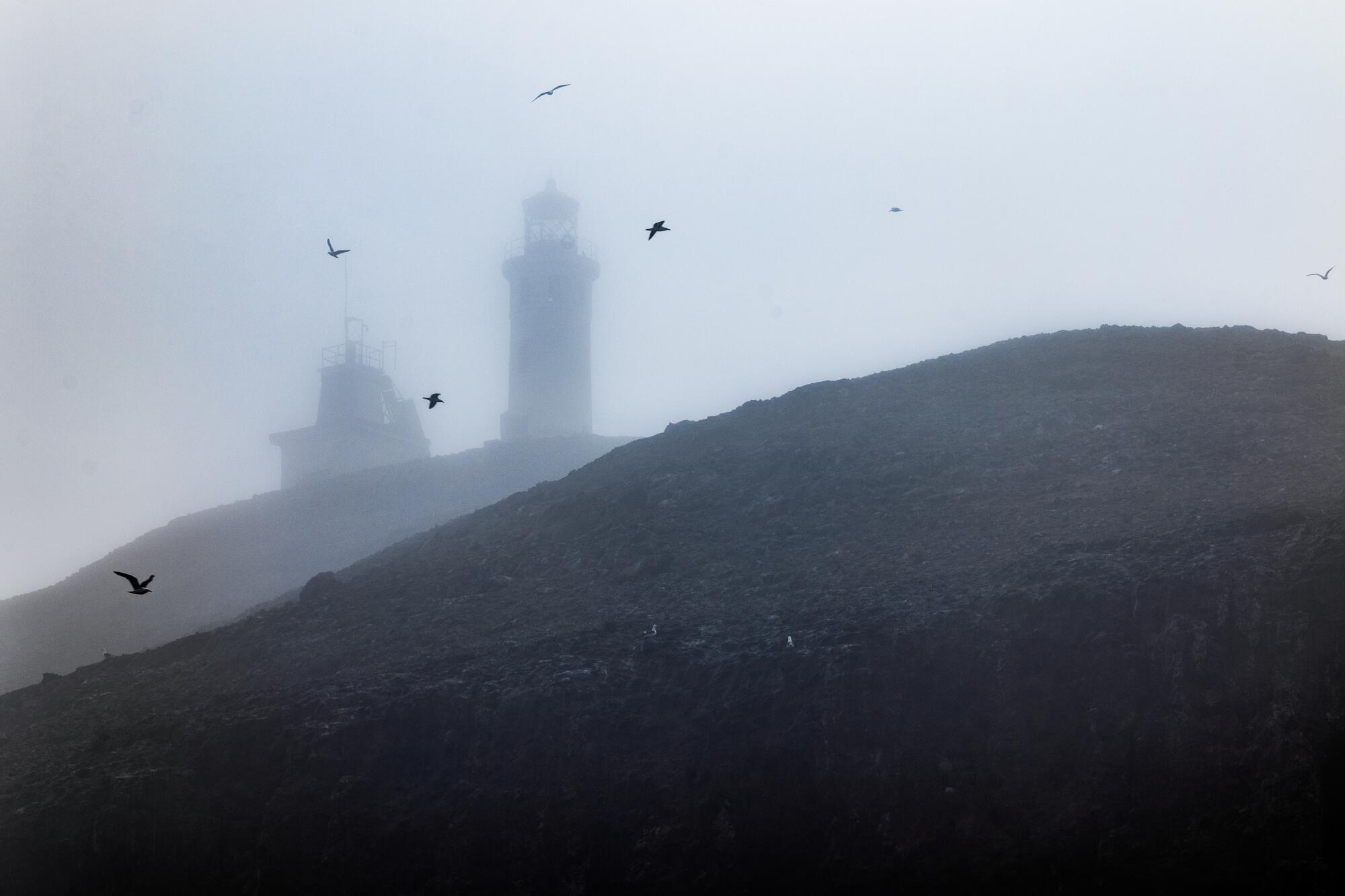
Touring the island
My husband and I arrived on a gloomy winter morning. Coming up the stairs from the pier, we get a look around for the first time. Even through the fog, the island’s stubby vegetation is strikingly green and lush from recent rains, and seagulls are everywhere.
We start our day by joining the guided nature walk led by volunteer naturalist Joel Justin from the Channel Island Naturalist Corps. Tours are free and require no advance registration — all island visitors are required to attend a brief orientation, and then the naturalist on duty will announce a departure time and location for the tour.
Justin begins his talk with the obvious — the foghorn droning behind us and the lighthouse barely visible through the fog just a quarter mile away. He tells us the story of one of the first (and most literal) collisions between Anacapa and the Western world: the tale of the Winfield Scott, a passenger steamship that wrecked on the island in December of 1853.
Bound from San Francisco to Panama, the ship steered into the Santa Barbara Channel to take advantage of the calm waters, but struck a rock near Anacapa in the fog. Its passengers were stranded on the island for eight days before being rescued by a passing ship.
“Can you imagine what it would be like waiting here for rescue for that long?” he asks.
I think about it, surrounded by seagulls and fog, and I can picture how it felt for the poor passengers, who probably had their hearts set on some tropical Panama sunshine.
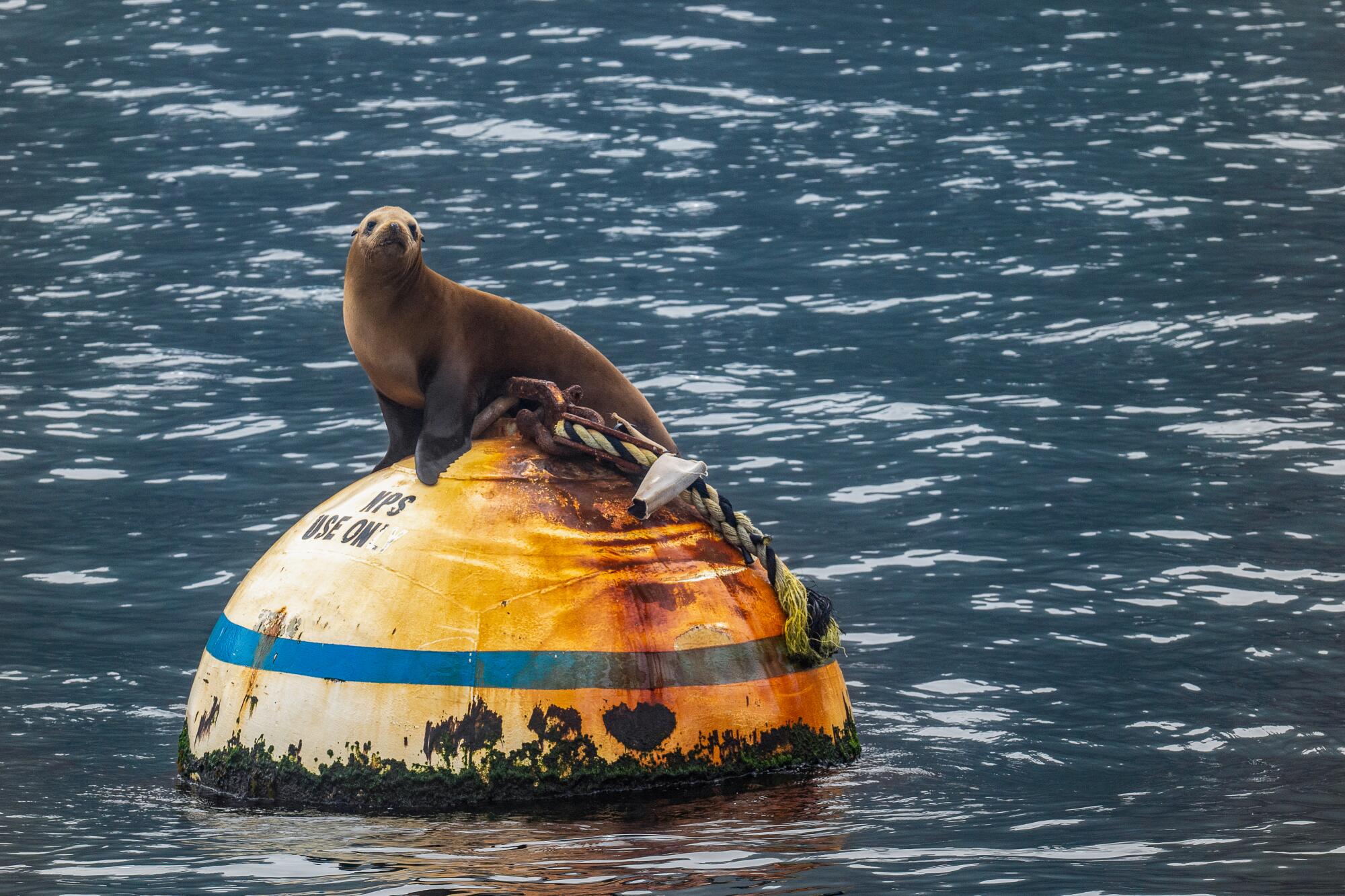
The history of the lighthouse
Perhaps predictably, the Winfield Scott was not the only ship to run aground and the Channel Islands today are popular among scuba divers for the many shipwrecks that can be explored in the waters. Eventually, Congress came to realize that something must be done, and a temporary first lighthouse was built in 1912, an unmanned acetylene lamp.
“It didn’t do a great job at staying lit,” Justin explains. That lighthouse was replaced in 1932 with the one standing today, along with the accompanying foghorn. The island’s brown pelicans, once inhabitants of the East Point, resettled their nests almost immediately to West Anacapa, where they still live out of earshot of the blaring horn.
With the opening of the lighthouse came the first humans to live on the island since the Chumash people had left for the mainland in the 1820s following the disease, famine, and economic collapse that followed the arrival of the Spanish missionaries in California. The new inhabitants, first engineers then Coast Guard members, lived on the island for several months at a time, and set about building not just the lighthouse, but also homes and office buildings and a network of roads around the island.

An island threatened by erosion and the attempts to stop it
With the boom in construction on the tiny, wet and windy island, erosion became a problem almost immediately. Trying to find natural solutions, the Coast Guard planted two species of ice plant —crystalline and red-flowered — across Anacapa to control the new erosion problem. Native to South Africa, these fast-growing succulents were able to quickly take root and establish themselves on the island, stopping the erosion. Unfortunately, they were also able to outcompete much of the local vegetation.
For tens of thousands of years, the Channel Islands were separated from the mainland and the species that adapted to island life were able to carve out their own niche. With the exception of the island Chumash, who traveled across the channel to trade with their mainland counterparts, there were few forces that were able to introduce newcomers to the island. The species that inhabited the island were able to specialize, and carve out their own island niches free of new competitors.
The native plants were quickly outcompeted by the hardy ice plant, which was able to thrive even in dry years, and ice plant was estimated to cover nearly 20% of East Anacapa by the early 2000s.
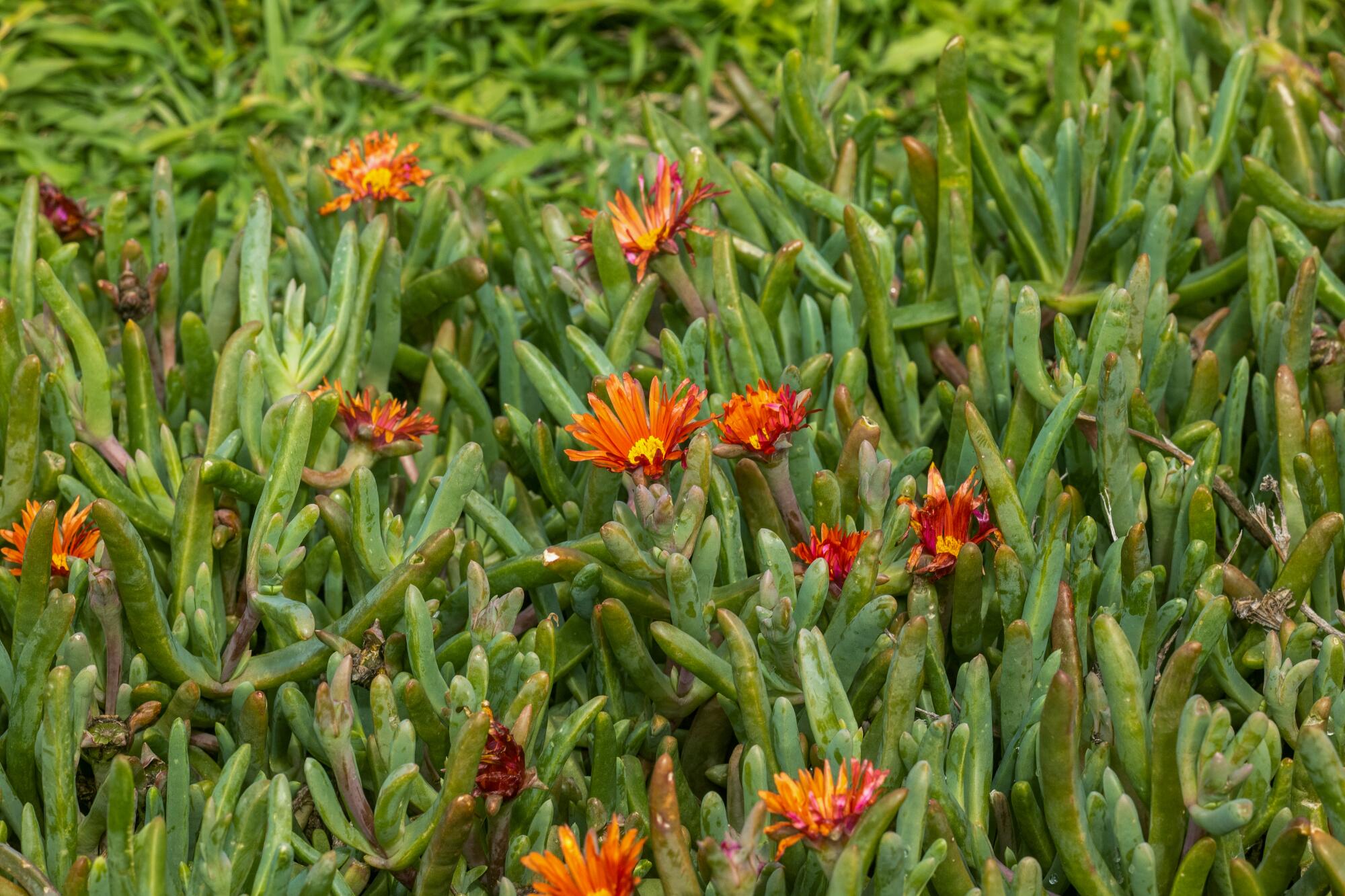
See today’s restoration projects
All of our natural spaces, especially national parks, are places where we can see both the natural world and our own influence on it. From shrinking glaciers to endangered species, no place is wild enough to truly push back the influence of the industrialized world. Thanks to their isolation, though, the Channel Islands have the unique opportunity to reap the benefits of some radical restoration projects that aim to remove invasive species, restore the islands and protect the remaining native species.
In recent years on Anacapa, that has meant a dedicated effort to remove the ice plant. Through volunteers manually weeding the plants, covering dense patches with black plastic to kill it and selectively applying water-safe herbicides, the park has managed to greatly reduce the ice plant population. It’s still easy to find patches of ice plant along the trails and you can see their distinctive red flowers any time you look across the island, but areas stripped of the invaders are being replanted with native species like coreopsis and dudleya.
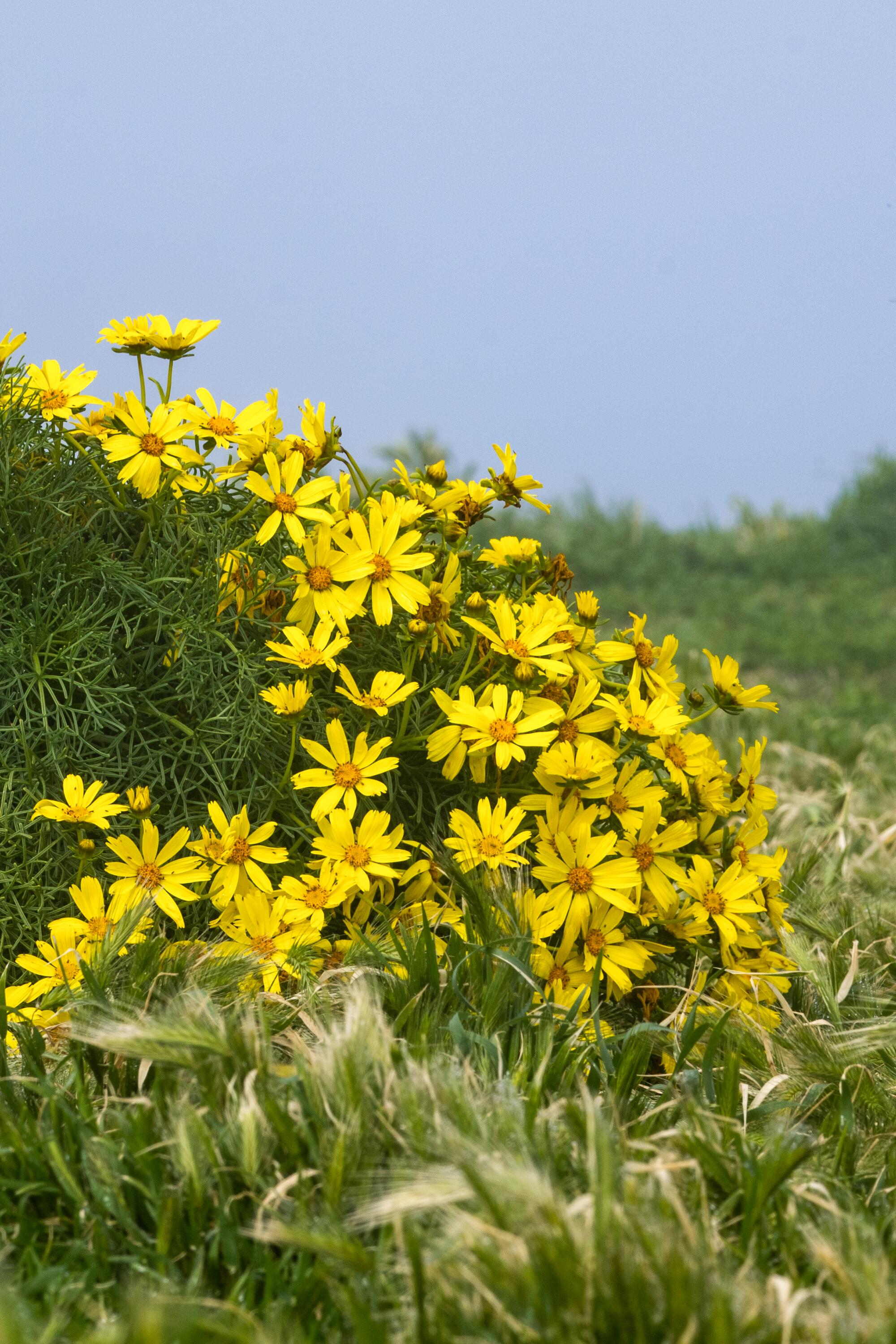
Other invasive species: rats and birds
Island conservation isn’t just about removing invasive vegetation — sometimes, it’s invasive animals that need to go. Further south on Catalina, hunters were conscripted in the 1990s to fully eliminate the island’s feral goat population, which had been decimating native plants for decades. On Anacapa, the problem was a different animal: the common black rat. Nobody knows exactly when or how the rats first arrived — they could well have been marooned alongside the poor passengers of the Winfield Scott —but by the early 2000s, they had a sizable and destructive presence on the island.
Among the Channel Islands, Anacapa and Santa Barbara are the only islands that that are not habitats for the adorable island fox. This means these two islands serve as a vital niche to the vast seabird populations that live along the Southern California coast. With no terrestrial predators to steal their eggs, these islands are breeding sanctuaries for ground- and cliff-nesting seabirds like the western gull, Scripps’s murrelet and the ashy storm petrel. On Anacapa, the rats found the birds’ nests easy pickings, and a mass extermination campaign finally declared the island rat-free in 2003, returning Anacapa to the birds.
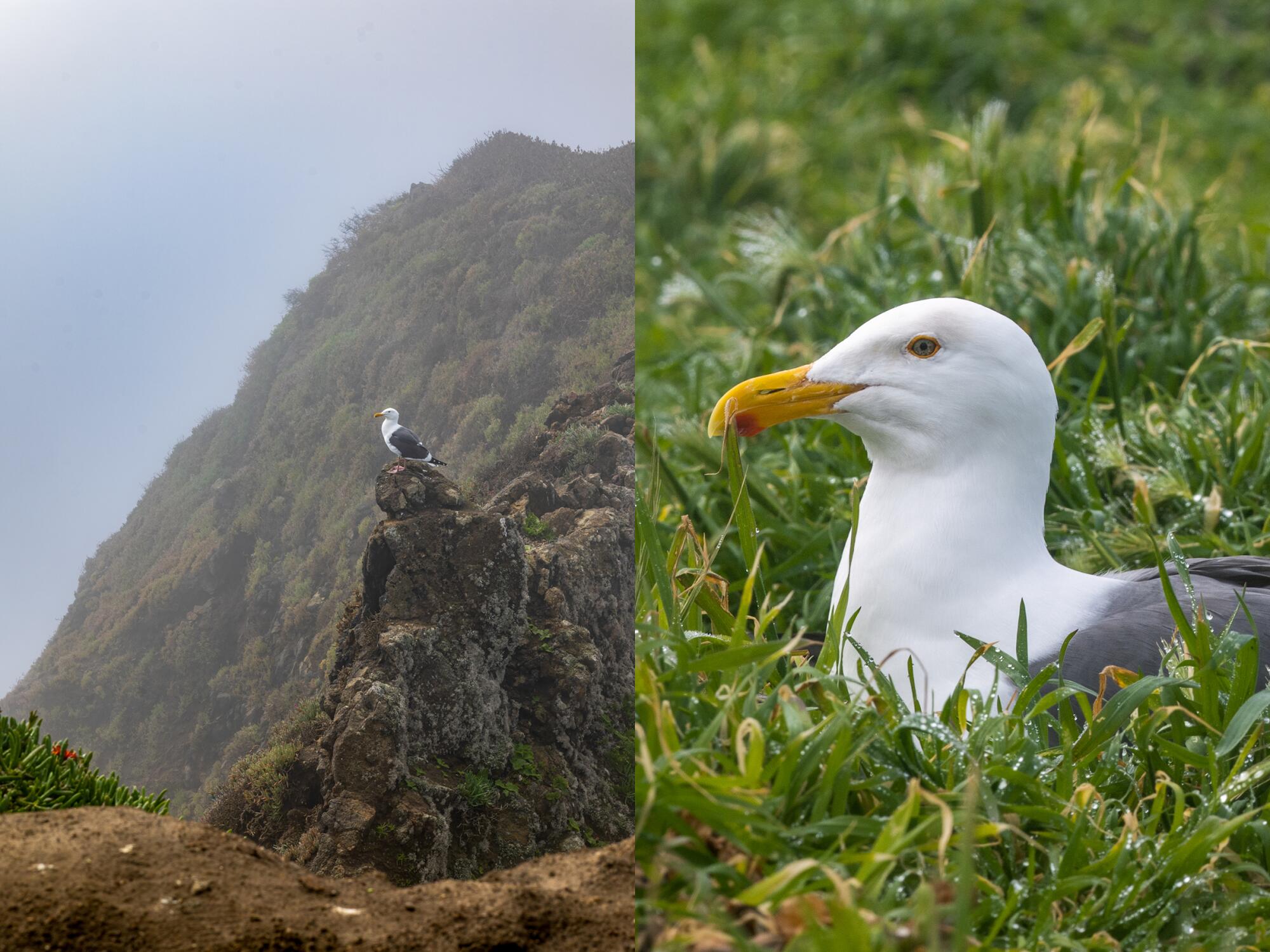
The gulls of Anacapa
It helps to acknowledge one thing upfront: the seagull may be one of nature’s least charismatic creatures. Loud, smelly and aggressive, the western gull is seen more as an urban pest than a majestic seabird by most people in California. The gulls on Anacapa are no different — they squawk, screech, fight and defecate everywhere you can see them. I ask Justin what separates these birds from the gulls we see on the mainland and am surprised to learn that it’s actually the same population.
I think of this a few days later when I’m leaving the grocery store and see a half dozen gulls fighting over a box of leftover French fries on the ground. These aren’t just the same species as the birds on Anacapa, they’re the same flock – most of these birds were probably born there and will return to the beautiful island every year to raise new chicks.
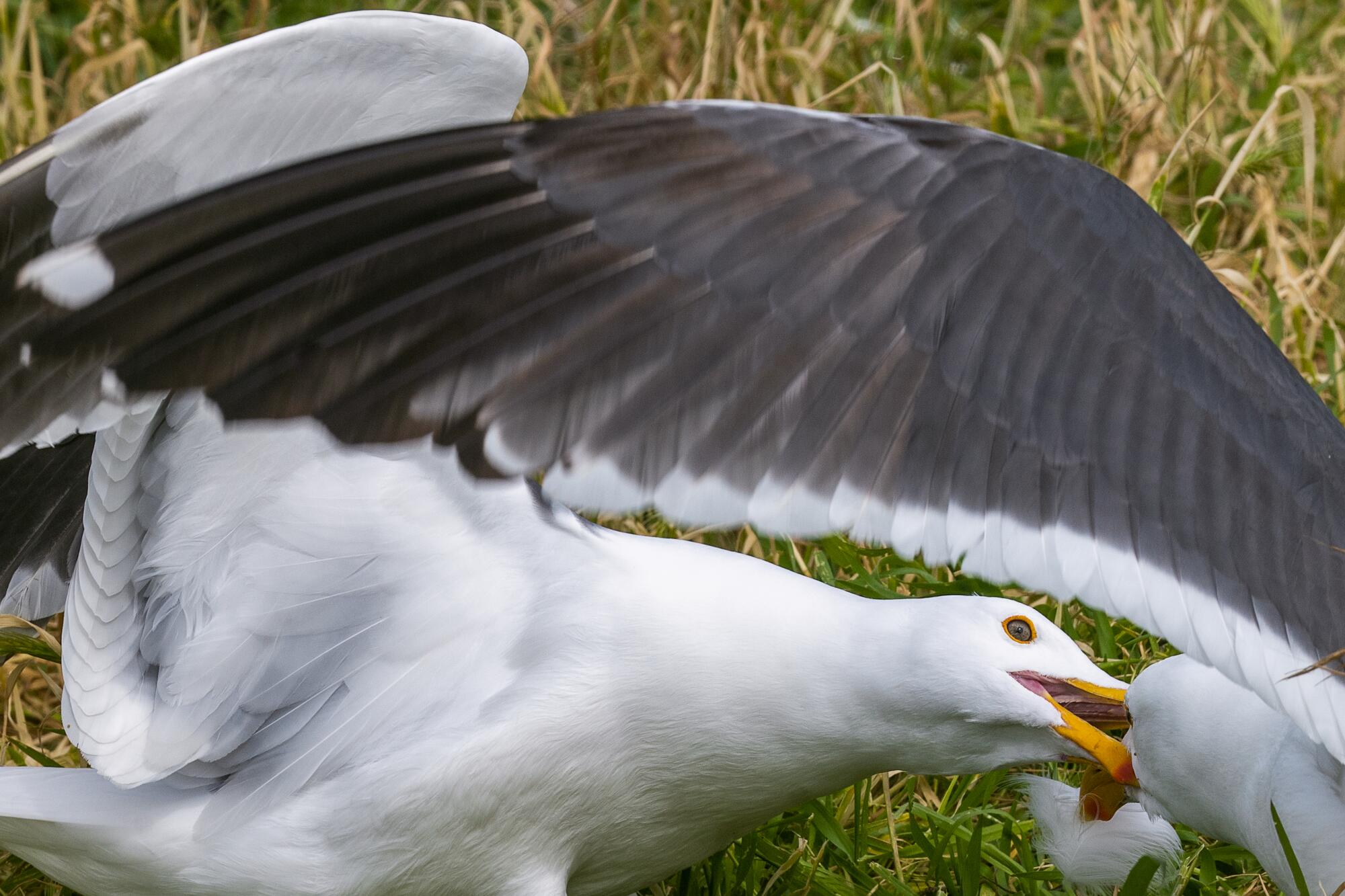
Signs of civilization litter Anacapa, from the shipwrecks underwater to the runaway landscaping choices, from the lighthouse and foghorn to roads and buildings. In some parts of the island, piles of seashell fragments are remnants of Chumash jewelry-making, dating centuries before the lighthouse. But some signs of humanity weren’t brought by humans — you’ll spot chicken bones and snack wrappers, brought home to the island from the mainland by the gulls.
Unlike the shy pelicans, who prefer to avoid areas of human activity, the gulls have taken a different approach to the arrival of our cities on their shores. Rather than retreating, they have proved themselves to be curious, resourceful and adaptable — finding new ways to raise generation after generation of their chicks even amid centuries of change around them.
It’s hard not to respect their tenacity, however outwardly unpleasant. If the gulls can learn to accept the foghorn, I guess I can, too. Anacapa shows us that however much you can roll back some encroachments upon the natural order, there’s no erasing our complicated yet often awe-inspiring coexistence with nature.
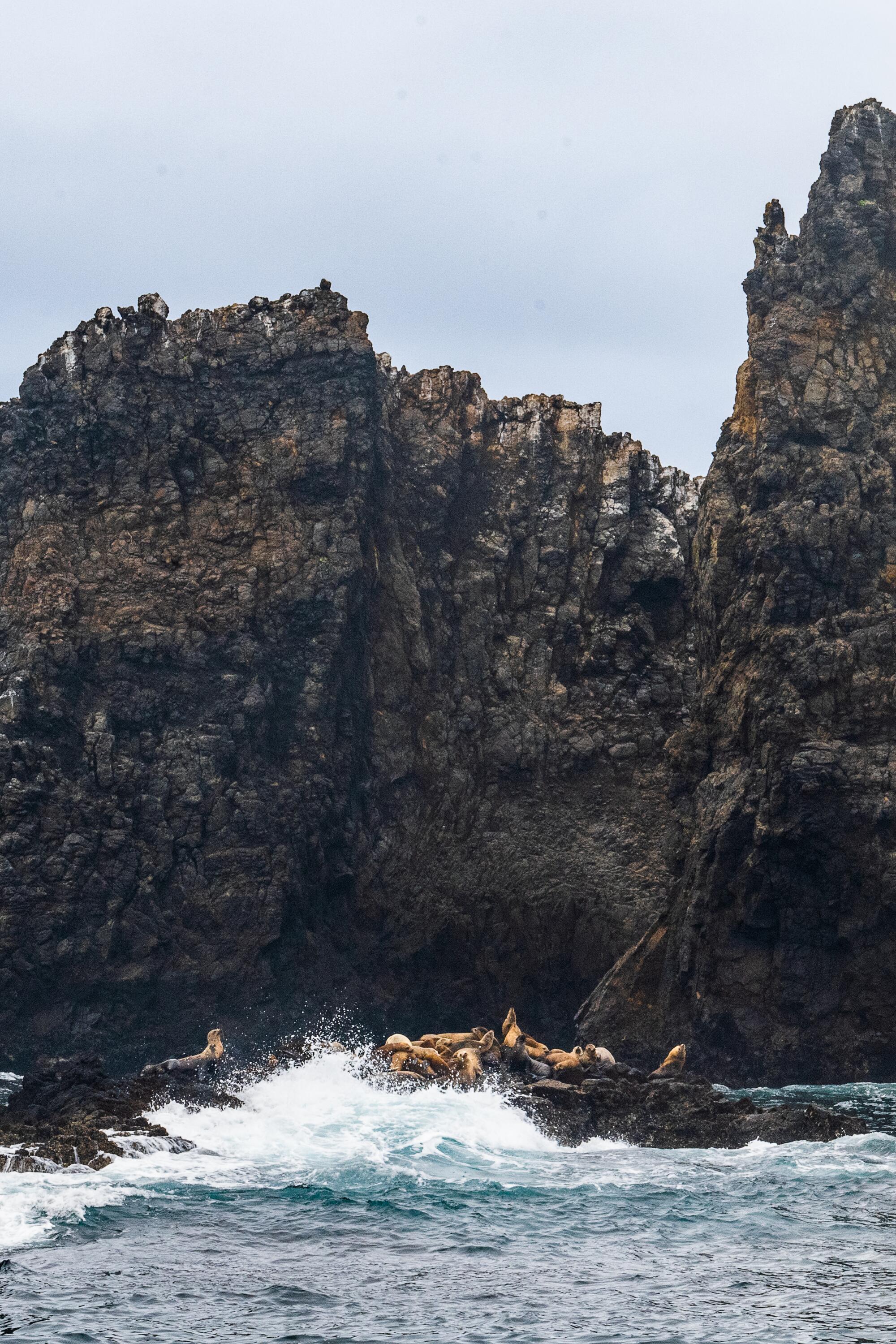
More to Read
Sign up for This Evening's Big Stories
Catch up on the day with the 7 biggest L.A. Times stories in your inbox every weekday evening.
You may occasionally receive promotional content from the Los Angeles Times.
